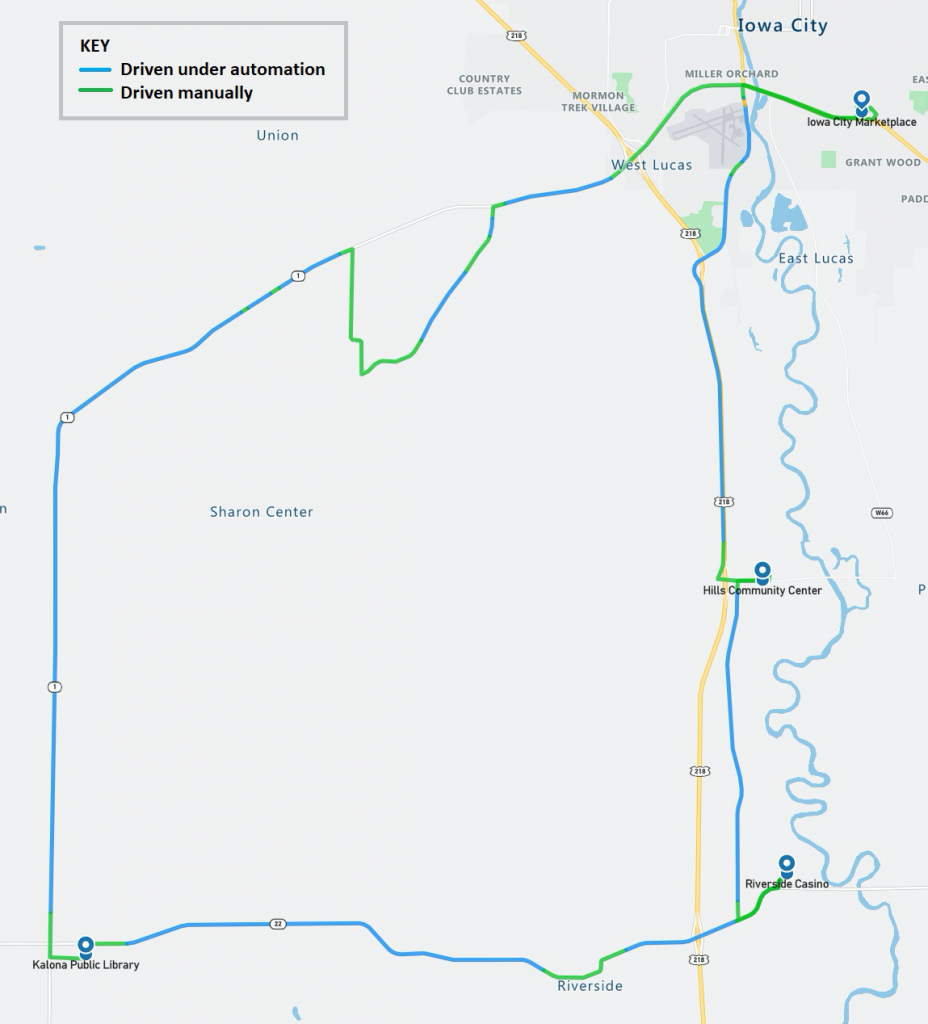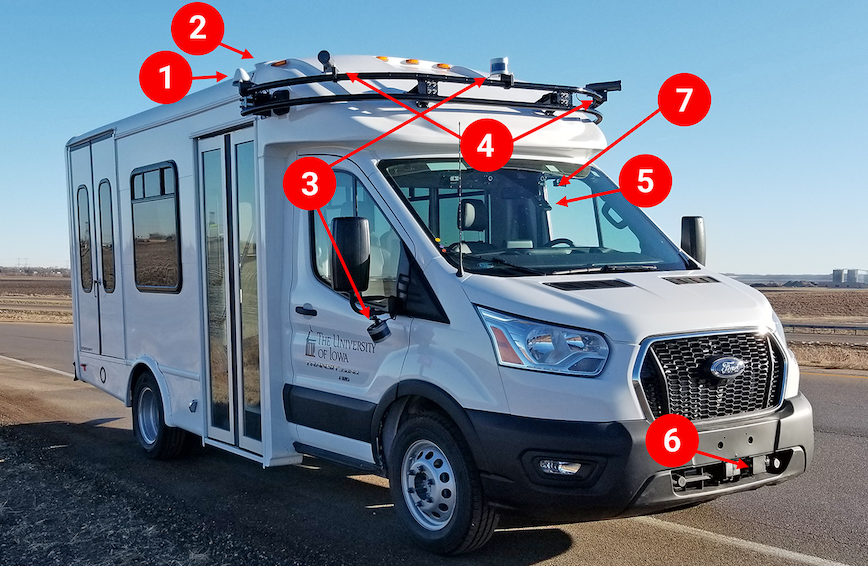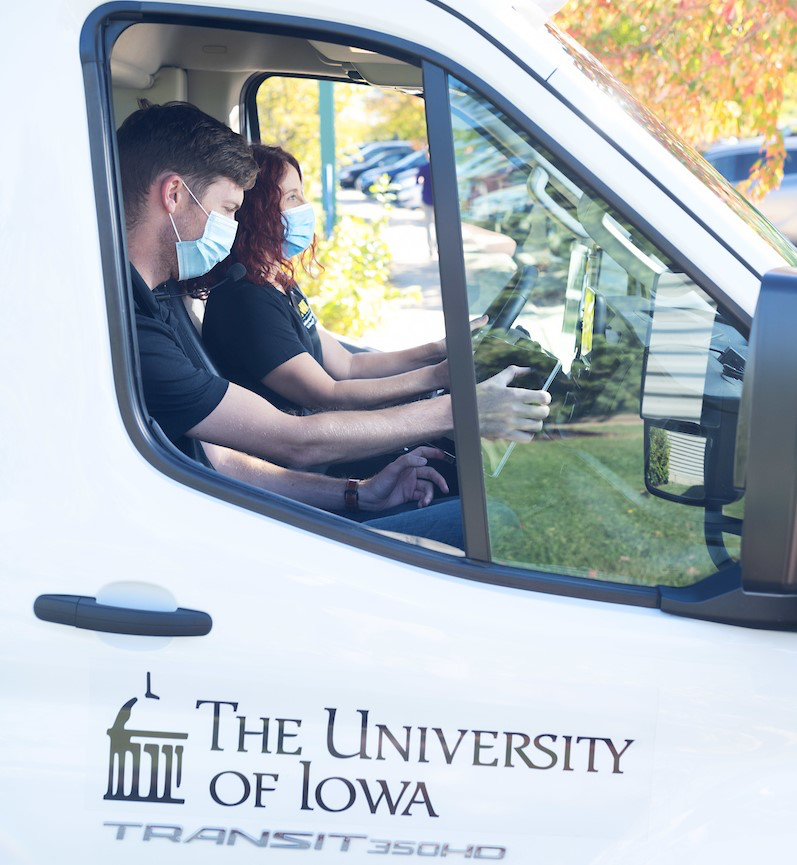The National Advanced Driving Simulator (ADS) Project, based out of the University of Iowas, has completed the initial development and testing of its ADS Transit vehicle, transporting rural citizens on a loop of four Iowa counties. The team performed the first phase of data collection, which involved operating its Ford Transit mini-bus on a 47-mile route through four communities. By early November 2021, they had completed 12 data collection drives with a total of 24 riders from Hills, Riverside, Kalona, Iowa City, and surrounding areas.
During the first phase of the data collection, the ADS team focused development on automating the interstate and divided highway sections of the route. As an example, the map of their twelfth drive is shown below. The blue line is where they operated the Transit under automation, and the green line shows where they had to manually drive the Transit. Given that controlled access roadways and highways constitute the majority of the 47 mile route, about 60% of the route was drive under automation for that drive.

As the project progresses over the next two years, the ADS team with partners at AutonomouStuff will add functionality to the vehicle that will allow them to drive additional sections of the route under automation (such as being able to driving through towns, the ability to read traffic lights, etc.). They anticipate that successive phases will increase the percentage of the route driven under automation. However, those increases will likely be smaller increments. Data will be publicly available starting in early 2022.
A full description of the project and the vehicle is available at an earlier Inside Autonomous Vehicles story, “Going Up the Country in a Driverless Shuttle,” June 2021.

- 5.9 GHz Dedicated Short-Range Communications (DSRC) antenna
- GPS antenna: This works to identify the location of our vehicle within a high-definition map of our route.
- LiDARs (Light Detection and Ranging): Multiple LiDARs on the front and rear of the vehicle use scanning laser light to sense the environment around it and detect objects
- High-definition cameras (in waterproof housings): Used to detect traffic light states (color of traffic light) at signaled intersections
- Mobileye 630 collision avoidance system (interior)
- Long range radars: Yet another way to detect objects, radars use radio waves to detect objects.
- Webcam video camera (interior, front and rear)
Roles of the safety driver and co-pilot
The ADS Transit vehicle is continuously monitored and driven by a trained safety driver and co-pilot, both following strict safety protocols. The safety driver keeps hands on the wheel at all times, even when the vehicle is under automation. The driver easily and quickly switches to manual driving whenever it is needed (as easy as taking a vehicle out of cruise control).
The role of the safety driver is to safely operate the vehicle, as follows:
- Monitor the road and the behavior of the vehicle at all times
- Disengage the ADS whenever needed
- Drive manually whenever it’s not in automation

The co-pilot is mainly responsible for monitoring the proper operation of the ADS technology and communicating with the safety driver to help enhance their situational awareness—in essence be a second set of eyes and ears.
News story drawn from the ADS newsletter, available through adsforruralamerica.uiowa.edu.

